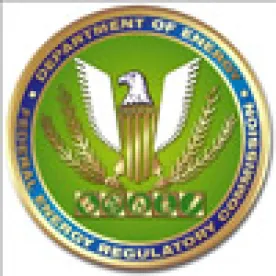On March 27, 2019, the Department of Energy (“DOE” or “Department”) extended the public comment period for its February 13, 2019 proposed rule that aims to streamline and modernize its energy efficiency rulemaking methodology.[1] The proposal, which is now open to comments until May 6, 2019, would make significant changes to the Department’s current “Process Rule,”[2] which describes the procedures, interpretations, and policies that guide the Department in developing energy conservation standards for consumer products. According to DOE, the proposed revisions would enhance transparency throughout the rulemaking process, increase Department accountability, and create more regulatory certainty for stakeholders by:
Making the Process Rule binding on the Department.[3]
According to DOE, the current Process Rule only guides its consideration and promulgation of new or revised energy efficiency standards. DOE believes that mandating compliance with the Process Rule would promote a consistent and predictable rulemaking environment.
Applying the Process Rule methodology to commercial equipment.[4]
The current Process Rule text only deals with energy efficiency rulemakings for consumer products. Although the Department has used the Process Rule methodology when promulgating energy efficiency standards for commercial equipment, the practice would become mandatory.
Adopting American Society of Heating, Refrigeration, and Air-Conditioning Engineers (ASHRAE) Standards.[5]
DOE would adopt revised ASHRAE standards for commercial equipment covered by the standards, except in exceptional circumstances where the Department can demonstrate by “clear and convincing evidence” that a more stringent energy efficiency standard is needed. Clear and convincing evidence only exists if “DOE determines there is no substantial doubt that the more stringent standard would result in a significant additional conservation of energy.” In such case, the Process Rule methodology would govern promulgation of the more stringent standard.
Providing for earlier stakeholder involvement in rulemakings.[6]
In response to stakeholder requests, DOE proposes to first announce its intent to conduct a rulemaking and request the submission of comments on whether the Department should proceed. DOE also would involve stakeholders earlier in prioritizing its rulemaking activities rather than when it publishes its Regulatory Agenda.
Limiting number of products “covered” under the Energy Policy and Conservation Act.[7]
DOE is proposing to limit its designation of new “covered products” under the Act to only those consumer products for which regulation is “necessary and appropriate,” and to commercial equipment for which regulation is “necessary.” Any newly proposed covered products or equipment would be narrowly and clearly defined so that coverage is limited to the intended products.
Changing how the Department determines that projected energy savings are “significant.”[8]
DOE is considering comparing projected energy savings from a proposed energy efficiency standard to a threshold of 0.5 quad[9] of energy saved over a 30-year period. If the projected energy savings do not meet this threshold, then the standard must demonstrate a 10 % improvement in energy efficiency or reduction in energy usage.
Finalizing test procedures before proposing new energy efficiency standards.[10]
On occasion, DOE has issued new energy efficiency standards and test procedures concurrently. Recognizing that stakeholders may need to better understand the test procedure before commenting effectively on an applicable standard, the Department would be required to publish a final test procedure at least 180 days before proposing a new or amended energy conservation standard.
Adopting industry test standards verbatim, except in certain circumstances.[11]
DOE often makes some change to industry test standards it adopts that can impose significant additional cost on industry. DOE is proposing to adopt such test standards verbatim unless doing so would be unduly burdensome or would not be reflective of the actual energy use or operating costs of the product.
DOE is continuing to evaluate changes to its rulemaking process, including procedures for negotiated rulemakings and direct final rules. The Department also is contemplating changes in how it assesses the regulatory and economic burdens from its rules and other analytical methods. Comments on these additional considerations can also be submitted by the May 6th deadline. In the interim, DOE will hold another public meeting on the Process Rule on April 11, 2019 from 9am-4:30pm in Washington, DC. The meeting will also be broadcast as a webinar. Participants can register for the webinar here.
[1] Energy Conservation Program for Appliance Standards: Proposed Procedures for Use in New or Revised Energy Conservation Standards and Test Procedures for Consumer Products and Commercial/Industrial Equipment, 84 Fed. Reg. 3,910 (Feb. 13, 2019).
[2] Procedures, Interpretations, and Policies for Consideration of New or Revised Energy Conservation Standards for Consumer Products, 10 C.F.R. § 430, Subpart C, Appendix A.
[3] See 84 Fed. Reg. 3,910, 3,912 (Feb. 13, 2019).
[4] See Id. at 3,913.
[5] See Id. at 3,914.
[6] See Id. at 3,916; 3917-21.
[7] See Id. at 3,916.
[8] See Id. at 3,921.
[9] A “quad” of energy is a unit of measurement equal to one quadrillion British thermal units.
[10] See 84 Fed. Reg. 3,910, 3,926.
[11] Id.





 />i
/>i
